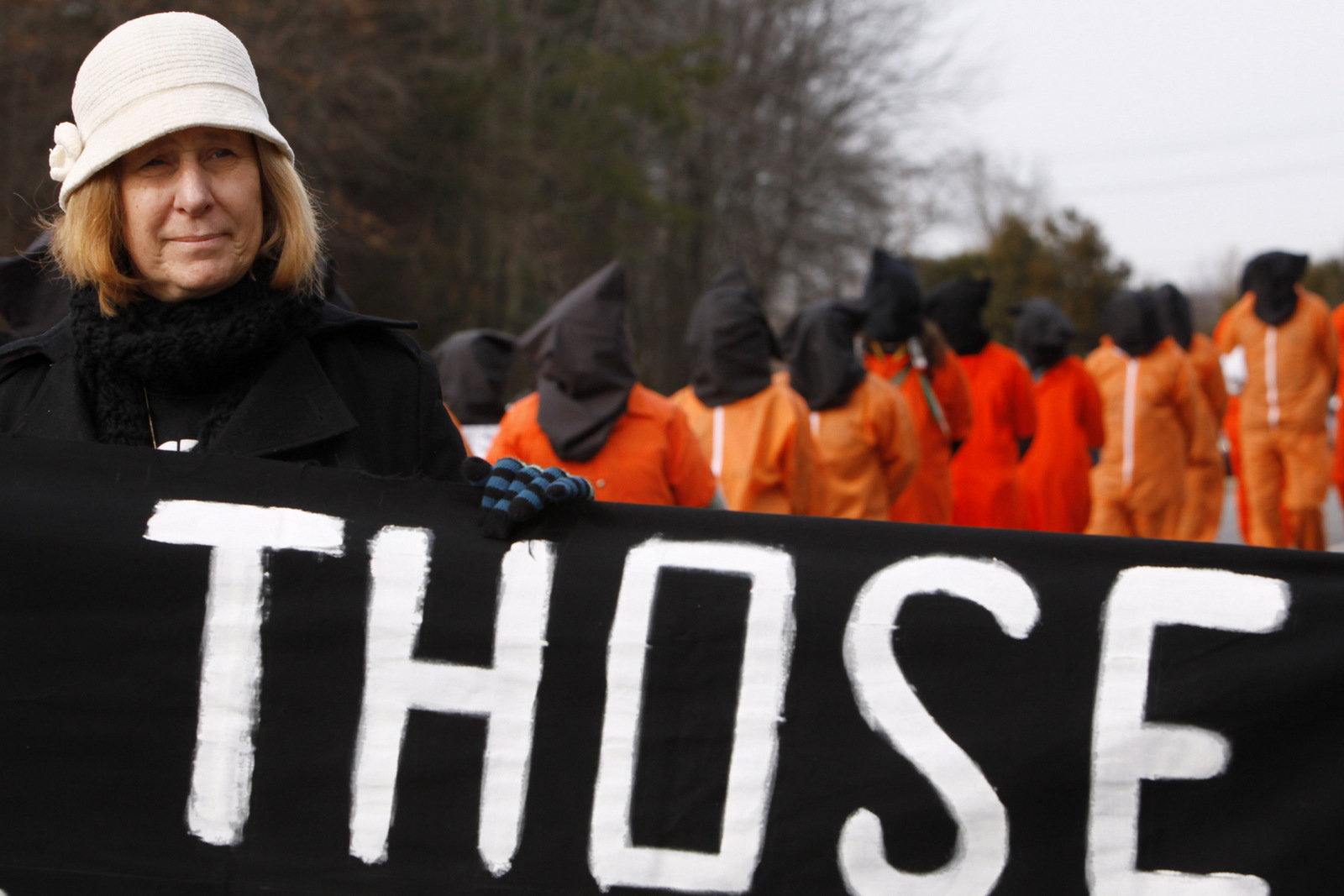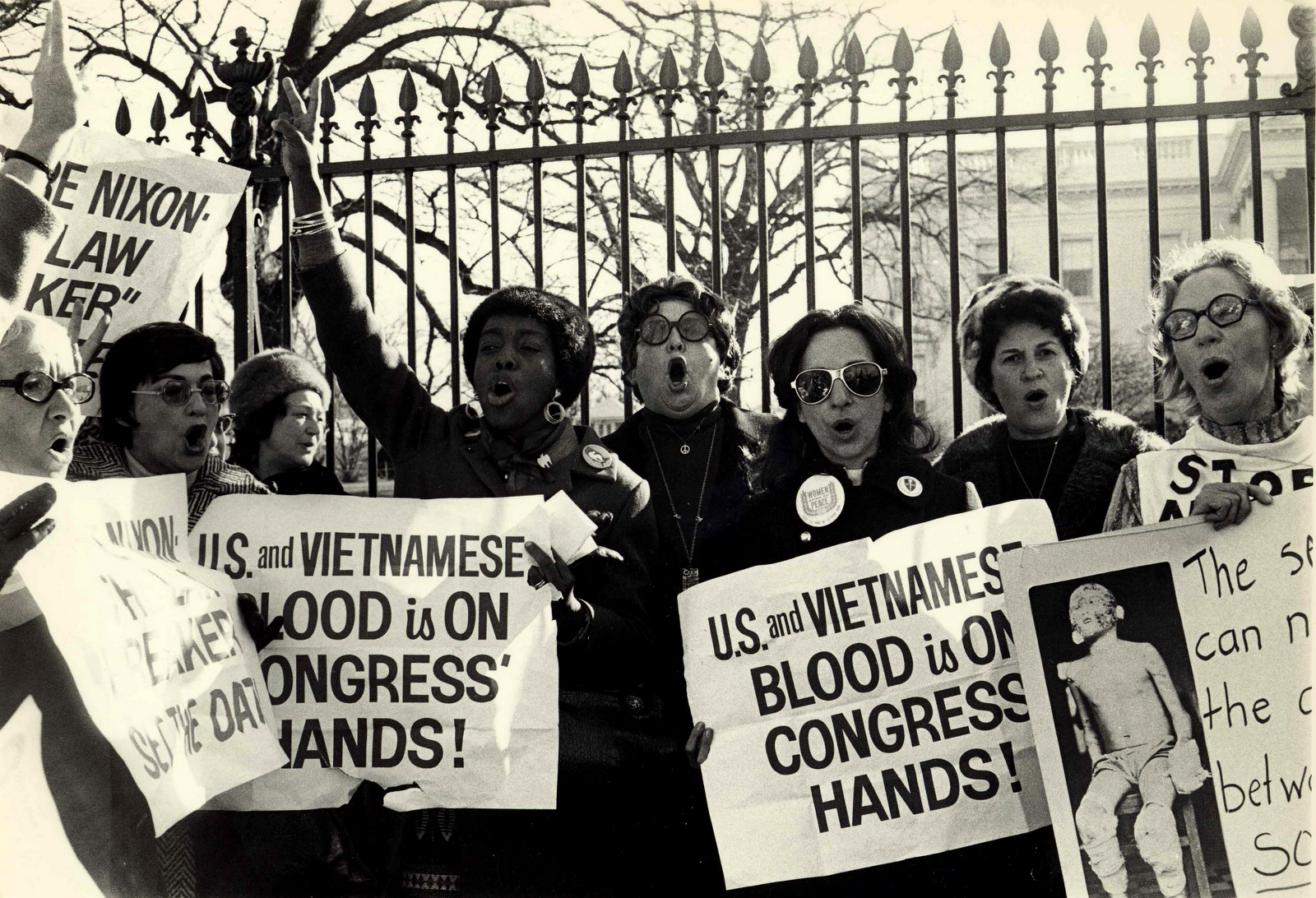WASHINGTON – In the last few years, arguably the most visible and well-publicized march on the U.S. capital has been the “Women’s March,” a movement aimed at advocating for legislation and policies promoting women’s rights as well as a protest against the misogynistic actions and statements of high-profile U.S. politicians. The second Women’s March, which took place this past year, attracted over a million protesters nationwide, with 500,000 estimated to have participated in Los Angeles alone.
However, absent from this women’s movement has been a public anti-war voice, as its stated goal of “ending violence” does not include violence produced by the state. The absence of this voice seemed both odd and troubling to legendary peace activist Cindy Sheehan, whose iconic protest against the invasion and occupation of Iraq made her a household name for many.
Sheehan was taken aback by how some prominent organizers of this year’s Women’s March were unwilling to express anti-war positions and argued for excluding the issue of peace entirely from the event and movement as a whole. In an interview with MintPress, Sheehan recounted how a prominent leader of the march had told her, “I appreciate that war is your issue Cindy, but the Women’s March will never address the war issue as long as women aren’t free.”
War is indeed Sheehan’s issue and she has been fighting against the U.S.’ penchant for war for nearly 13 years. After her son Casey was killed in action while serving in Iraq in 2004, Sheehan drew international media attention for her extended protest in front of the Bush residence in Crawford, Texas, which later served as the launching point for many protests against U.S. military action in Iraq.
Sheehan rejected the notion that women could be “free” without addressing war and empire. She countered the dismissive comment of the march organizer by stating that divorcing peace activism from women’s issues “ignored the voices of the women of the world who are being bombed and oppressed by U.S. military occupation.”
Indeed, women are directly impacted by war – whether through displacement, the destruction of their homes, kidnapping, or torture. Women also suffer uniquely and differently from men in war as armed conflicts often result in an increase in sexual violence against women.
For example, of the estimated half a million civilians killed in the U.S. invasion of Iraq, many of them were women and children. In the U.S. occupation of Afghanistan, the number of female casualties has been rising on average over 20% every year since 2015. In 2014 alone when Israel attacked Gaza in “Operation Protective Edge”, Israeli forces, which receives $10 million in U.S. military aid every day, killed over two thousand Palestinians – half of them were women and children. Many of the casualties were pregnant women, who had been deliberately targeted.
Given the Women’s March’s apparent rejection of peace activism in its official platform, Sheehan was inspired to organize another Women’s March that would address what many women’s rights advocates, including Sheehan, believe to be an issue central to promoting women’s rights.
Read more by Whitney Webb
- The U.S. Military Will Have More Robots Than Humans by 2025
- Israel Preps for Syrian War with Golan’s Oil and Water in its Sights
- Lifting of US Propaganda Ban Gives New Meaning to Old Song
- How “America First” Became the Presidency of the Pentagon
Dubbed the “Women’s March on the Pentagon,” the event is scheduled to take place on October 21 – the same date as an iconic anti-war march of the Vietnam era — with a mission aimed at countering the “bipartisan war machine.” Though men, women and children are encouraged to attend, the march seeks to highlight women’s issues as they relate to the disastrous consequences of war.
The effort of women in confronting the “war machine” will be highlighted at the event, as Sheehan remarked that “women have always tried to confront the war-makers,” as the mothers, daughters, sisters and wives of the men and women in the military, as well as those innocent civilians killed in the U.S.’ foreign wars. As a result, the push for change needs to come from women, according to Sheehan, because “we [women] are the only ones that can affect [the situation] in a positive way.” All that’s missing is an organized, anti-war women’s movement.
Sheehan noted the march will seek to highlight the direct relationship between peace activism and women’s rights, since “no woman is free until all women are free” and such “freedom also includes the freedom from U.S. imperial plunder, murder and aggression” that is part of the daily lives of women living both within and beyond the United States. Raising awareness of how the military-industrial complex negatively affects women everywhere is key, says Sheehan, as “unless there is a sense of international solidarity and a broader base for feminism, then there aren’t going to be any solutions to any problems, [certainly not] if we don’t stop giving trillions of dollars to the Pentagon.”
I’m not an alarmist, but . . .


Cindy Sheehan walks with participants in an anti-war protest that she organized outside of CIA headquarters in Langley, Va. on Saturday Jan. 16, 2010. (AP/Jacquelyn Martin)
Sheehan also urged that, even though U.S. military adventurism has long been an issue and the subject of protests, a march to confront the military-industrial complex is more important now than ever: “I’m not alarmist by nature but I feel like the threat of nuclear annihilation is much closer than it has been for a long time,” adding that, despite the assertion of some in the current administration and U.S. military, “there is no such thing as ‘limited’ nuclear war.” This makes “the need to get out in massive numbers” and march against this more imperative than ever.
Sheehan also noted that Trump’s presidency has helped to make the Pentagon’s influence on U.S. politics more obvious by bringing it to the forefront: “Even though militarism had been under wraps [under previous presidents], Trump has made very obvious the fact that he has given control of foreign policy to the ‘generals.’”
Indeed, as MintPress has reported on several occasions, the Pentagon – beginning in March of last year – has been given the freedom to “engage the enemy” at will, without the oversight of the executive branch or Congress. As a result, the deaths of innocent civilians abroad as a consequence of U.S. military action has spiked. While opposing Trump is not the focus of the march, Sheehan opined that Trump’s war-powers giveaway to the Pentagon, as well as his unpopularity, have helped to spark widespread interest in the event.
Different wings of the same warbird
Sheehan has rejected accusations that the march is partisan, as it is, by nature, focused on confronting the bipartisan nature of the military-industrial complex. She told MintPress that she has recently come under pressure owing to the march’s proximity to the 2018 midterm elections — as some have ironically accused the march’s bipartisan focus as “trying to harm the chances of the Democrats” in the ensuing electoral contest.
In response, Sheehan stated that:
Democrats and Republicans are different wings of the same warbird. We are protesting militarism and imperialism. The march is nonpartisan in nature because both parties are equally complicit. We have to end wars for the planet and for the future. I could really care less who wins in November.”
She also noted that even when the Democrats were in power under Obama, nothing was done to change the government’s militarism nor to address the host of issues that events like the Women’s March have claimed to champion.
“We just got finished with eight years of a Democratic regime,” Sheehan told MintPress. “For two of those years, they had complete control of Congress and the presidency and a [filibuster-proof] majority in the Senate and they did nothing” productive except to help “expand the war machine.” She also emphasized that this march is in no way a “get out the vote” march for any political party.
A movement, not just a protest


Women Strike for Peace protest at the Censure Nixon Rally in Washington, D.C. on January 18, 1972. (Photo: Dorothy Marder/Swarthmore College Peace Collection)
Even though planning began less than a month ago, support has been pouring in for the march since it was first announced on Sheehan’s website, Cindy Sheehan Soapbox. Encouraged by the amount of interest already received, Sheehan is busy working with activists to organize the events and will be taking her first organizing trip to the east coast in April of this year.
In addition, those who are unable to travel to Washington are encouraged to participate in any number of solidarity protests that will be planned to take place around the world or to plan and attend rallies in front of U.S. embassies, military installations, and the corporate headquarters of war profiteers.
Early endorsers of the event include journalists Abby Martin, Mnar Muhawesh and Margaret Kimberley; Nobel Peace Prize nominee Kathy Kelly; FBI whistleblower Coleen Rowley; and U.S. politicians like former Congresswoman Cynthia McKinney. Activist groups that have pledged their support include CodePink, United National Antiwar Coalition, Answer Coalition, Women’s EcoPeace and World Beyond War.
Though October is eight months away, Sheehan has high hopes for the march. More than anything else, though, she hopes that the event will give birth to a “real revolutionary women’s movement that recognizes the emancipation and liberation of all peoples — and that means [freeing] all people from war and empire, which is the biggest crime against humanity and against this planet.” By building “a movement and not just a protest,” the event’s impact will not only be long-lasting but grow into a force that could meaningfully challenge the U.S. military-industrial complex that threatens us all. God knows the world needs it.
Update: An earlier version of this report stated that Jill Stein endorsed the Women’s March on the Pentagon. Though she was an early endorser, Stein has temporarily retracted her endorsement of the event. In addition, the year was added to a quote from Sheehan to clarify her disinterest in the results of this year’s upcoming election.
———————–
For those eager to help the march, you can help spread the word through social media by joining the march’s Facebook page or following the march’s Twitter account, as well as by word of mouth. In addition, supporting independent media outlets — such as MintPress, which will be reporting on the march — can help keep you and others informed as October approaches.
Top Photo | Women’s March demonstrators near the Reflecting Pool at the Lincoln Memorial in Washington, Jan. 20, 2018. (AP/Cliff Owen)
Whitney Webb is a staff writer for MintPress News who has written for several news organizations in both English and Spanish; her stories have been featured on ZeroHedge, the Anti-Media, and 21st Century Wire among others. She currently lives in Southern Chile.
<!–
–>
Source Article from https://www.mintpressnews.com/cindy-sheehan-and-the-womens-march-on-the-pentagon-a-movement-not-just-a-protest/237835/
 RSS Feed
RSS Feed















 February 21st, 2018
February 21st, 2018  Awake Goy
Awake Goy 
 Posted in
Posted in  Tags:
Tags: 













